It’s hard to believe that we’re staring at the beginning of the holiday season! And though a garden post might seem a wee bit anachronistic and out of place, it’s not as much as you might think. In fact, provided you can set aside the holiday madness aside for a bit, now is a great time to start planning, prepping, and selecting plants for your garden space. If you missed any of the earlier posts in the series, find them here: Entry # 1, Entry # 2, Entry # 3, Entry # 4, and Entry # 5.
Once you have a sense of your garden’s purpose (flowers, fragrance, or privacy), the garden’s site and design layout, and some basic plant knowledge, both in terms of type (annual, biennial, or perennial) and location in the garden (remember the family picture analogy?), it’s time figure out plant selection. Time for me to dish on some of my must-have plants.
Front of the Border, aka the Short Kids
Creeping Phlox (not pictured): Another low-growing perennial with almost evergreen-like foliage. Star shaped, brightly colored flowers appear early in the spring–think pinks, white, and bright lavenders.
Creeping Thyme (not pictured): A low-growing perennial that’s also fragrant, with interesting foliage, and small, purple flowers that appear during mid-summer.
Sweet Alyssum (not pictured): A cold hardy annual low-growing annual that’s fragrant, inexpensive, and delicate looking. I often buy sweet alyssum six-packs and plant them in front of the border or place them in a planter with other annuals in a terracotta planter.
Irish Moss (not pictured): A carpet-like plant–it’s wonderful placed between rocks in a stone path and winds its way between the stones in a charming, non-invasive way. It also produces tiny, white flowers mid-summer.
Johnny-Jump Ups: A self-sowing annual that’s low-growing with sweet little flowers that are about 1 inch in size. Edible, they make wonderful garnishes to cupcakes, cakes, or salads.
Lavender: Another fragrant plant, it’s a perennial that produces lovely, lavender flowers. I usually layer it behind the shorter, “short kids.”
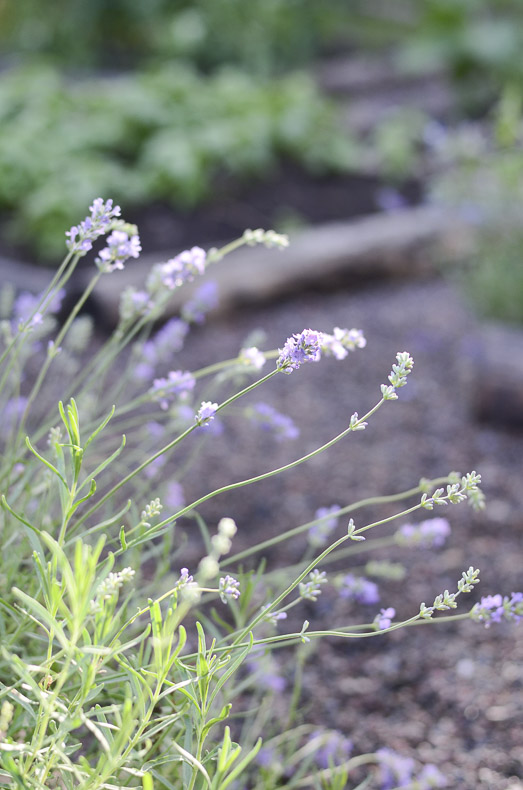
Love-in-a Mist: A self-sowing annual, one of my favorites, with incredibly delicate foliage, flowers and seed pods. It’s short-lived, but it’s worth waiting for its ephemeral beauty.
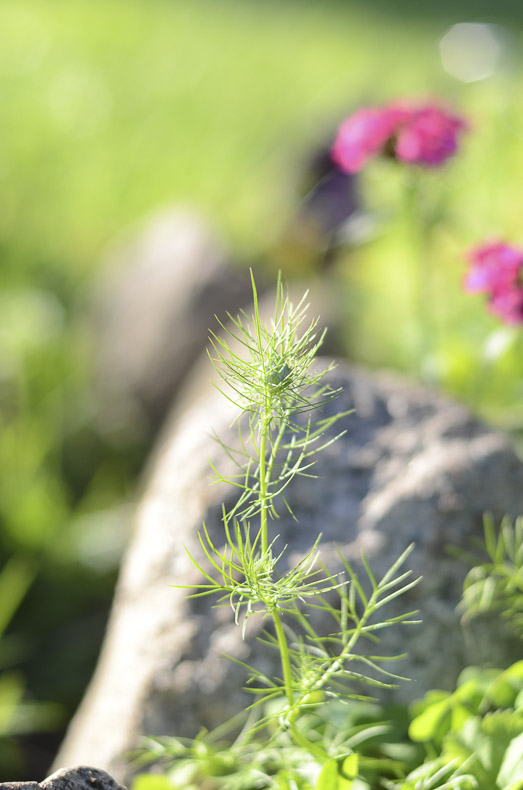
Pinks/Carnations/Dianthus: A bit of a misnomer, given that pinks come in different shades of red, pink, and white. They’re incredibly and deliciously fragrant–during summer evenings, the garden paths they line are fragrant in an otherwordly sort of way.
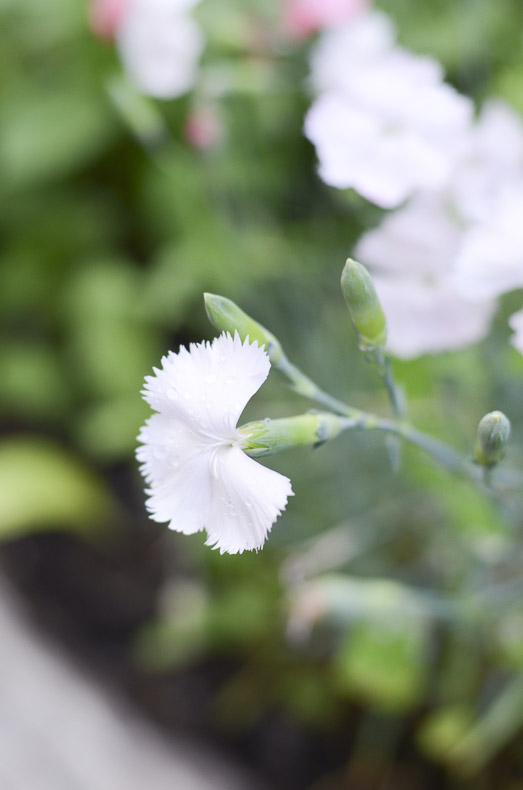
Sweet Woodruff (not pictured): A low-growing front of the border plant–though slightly invasive–with small, white, fragrant flowers.
Mid-Border, aka the Average Height Kids
Calendula: Also call Pot Marigold, Calendula is a self-sowing annual and it works well placed in the middle of the border. Like the Johnny-Jump Up, it’s edible and makes a lovely addition to salads, cakes, and has other food applications.
Columbine (not pictured): There are many, many varieties of Columbine: some are of the biennial variety, and some self-sow annually.
Cosmos (not pictured): An annual, easily planted from seed, it includes feathery foliage and daisy-like flowers in many colors. Depending on the variety, it can also be placed in the back of the border.
Borage: An herb, also edible, the leaves tastes similar to cucumber; the plant produces cornflower blue, star-shaped flowers. A self-sowing annual.

Lady’s Mantle: Hands down, this is one of my favorite mid-border plants. A perennial, hardy, but not overly aggressive, it produces clouds of chartreuse colored flowers and beautiful, interesting foliage. It’s a must have.
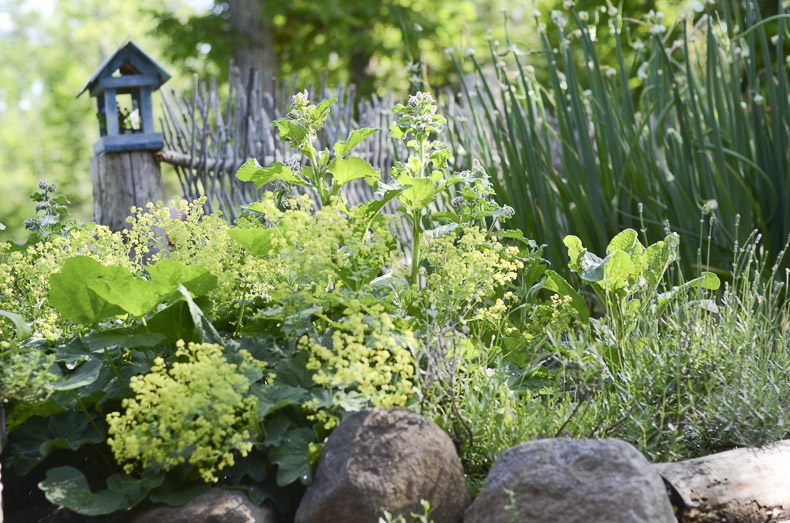
Lamb’s Ear: Another perennial, hardy but not overly aggressive, whose main attraction includes the silvery, fuzzy leaves, and then in later summer, light purple flowers. A must in a child’s garden.
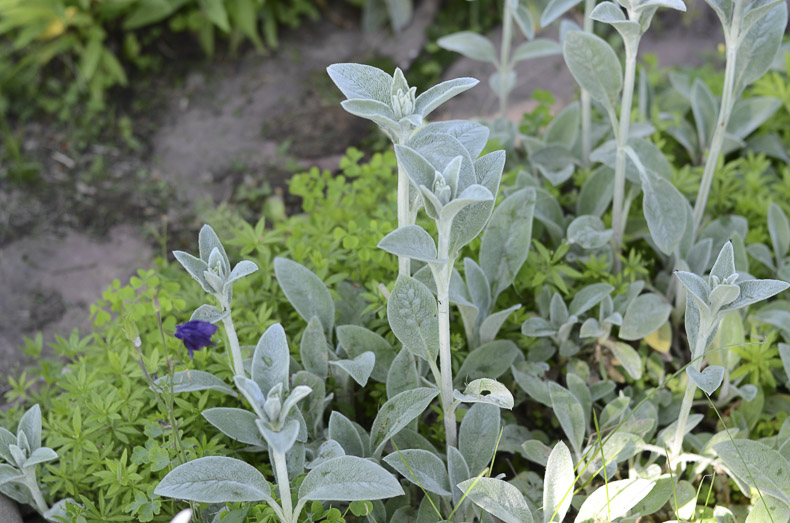
Sweet William: A biennial, it produces clusters of brightly colored, sometimes patterned flowers. Easily planted from seed.
Veronica: As with many flowers, there are many varieties of Veronica. Pictured here is the “Speedwell” variety–it’s especially effective planted in masses.
Yarrow: Another lovely, versatile mid-border perennial with interesting foliage, lovely bunches of flowers, and color options.
Zinnias (not pictured): An annual, one that’s easily grown from seed, and comes in a variety of colors and heights.
Back of the Border, aka the Tall Kids
Delphinium: The quintessential cottage garden plant, the delphinium is tall, boasting spires of flowers on long stems.
Foxglove (not pictured): Another classic cottage garden plant, it’s a biennial, and one that’s easy to grow from seed in a decent growing medium.
Hollyhock: Yet another classic cottage garden plant, and one you can grow from seed without too much difficulty. Most varieties are biennial in nature, rather than a true perennial.
Hybrid LA Lily: A bulb. Easy, peasy to grow with a gentle, sweet fragrance. Blooms in mid-summer.
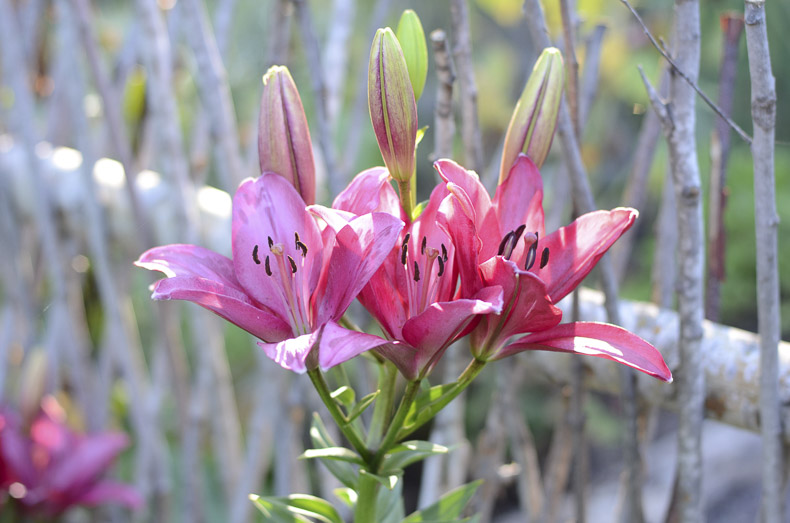
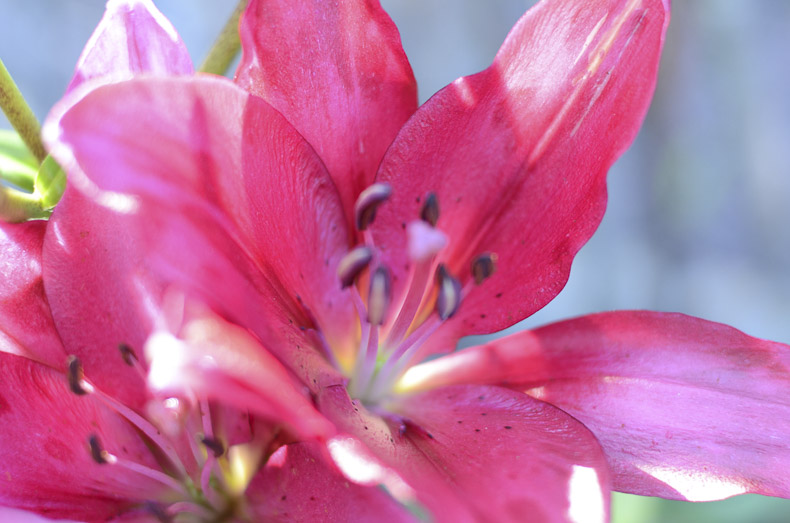
Peony: A classic perennial in any garden, the peony is known for its large, showy, sweet-smelling blooms. One can find a peony in all shades of white, cream, pink and red.
To remind you where this space began, here’s a shot of the front of the house mid-building phase–photo circa 2012. Can I say nightmare yard?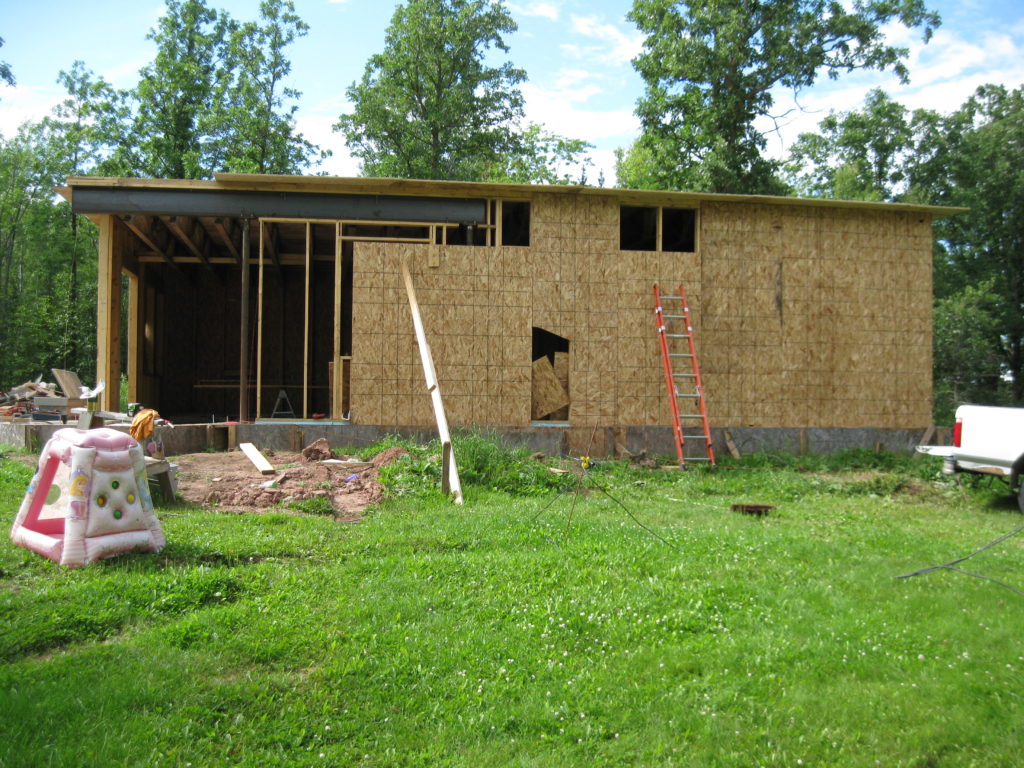
Here’s how it looks today:
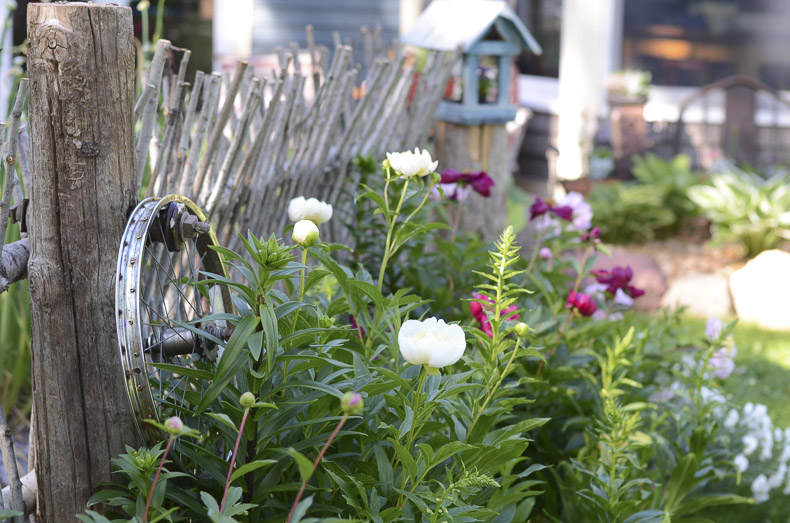
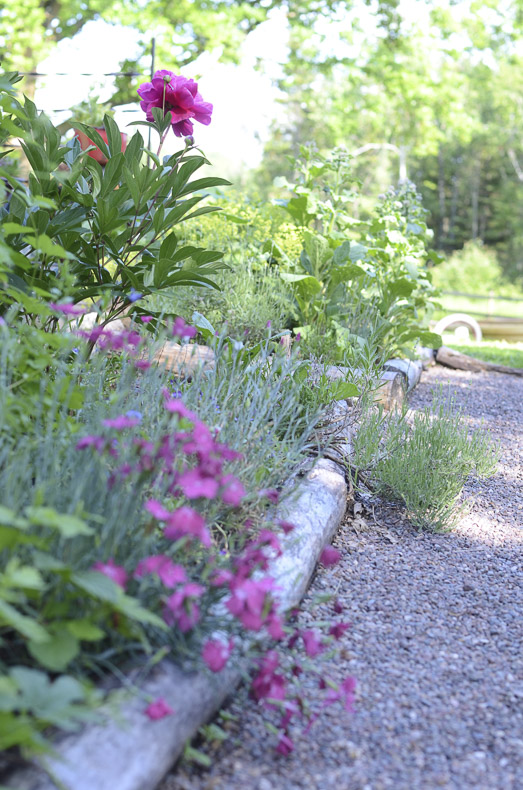
It may take some time for your dream garden to emerge, but try to focus on the journey, learning to appreciate the small victories, the small discoveries, and then, finally bask in your hard work.
To the season,

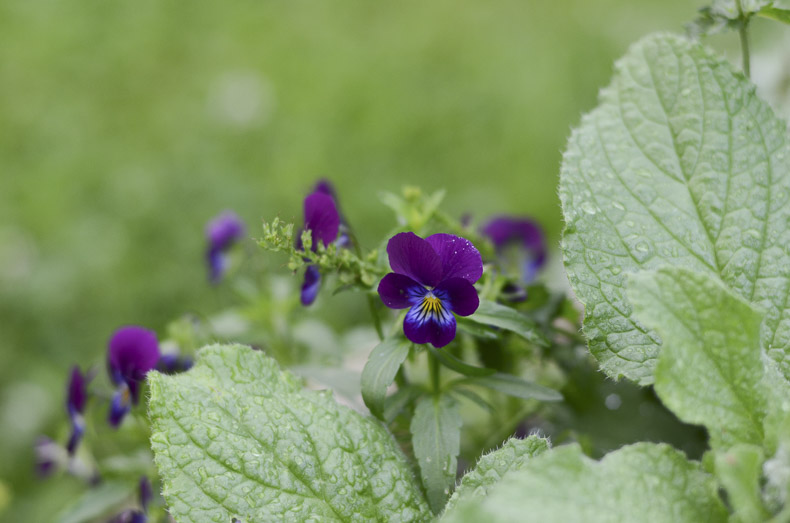
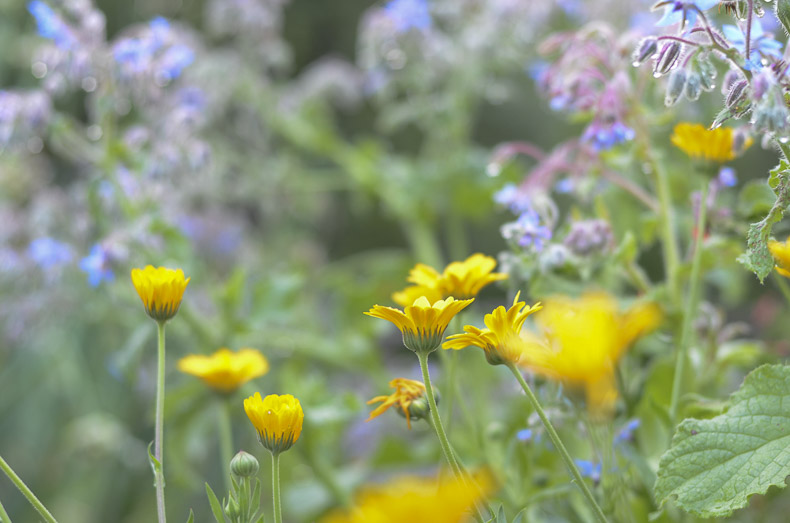
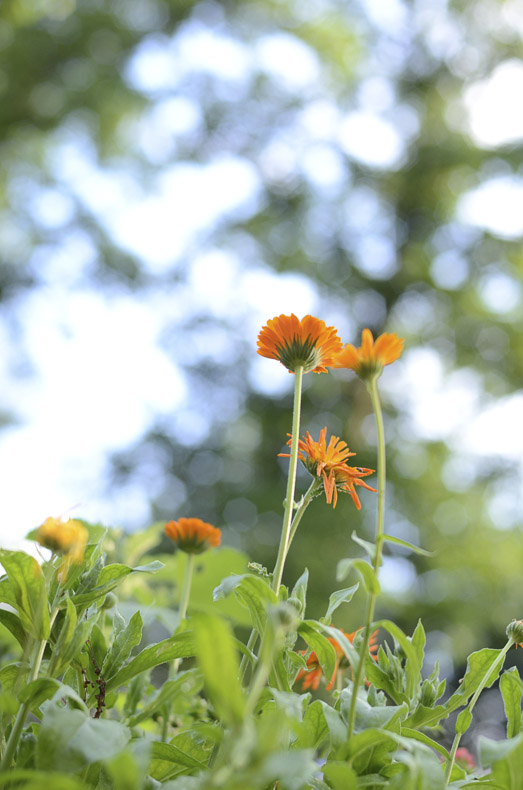
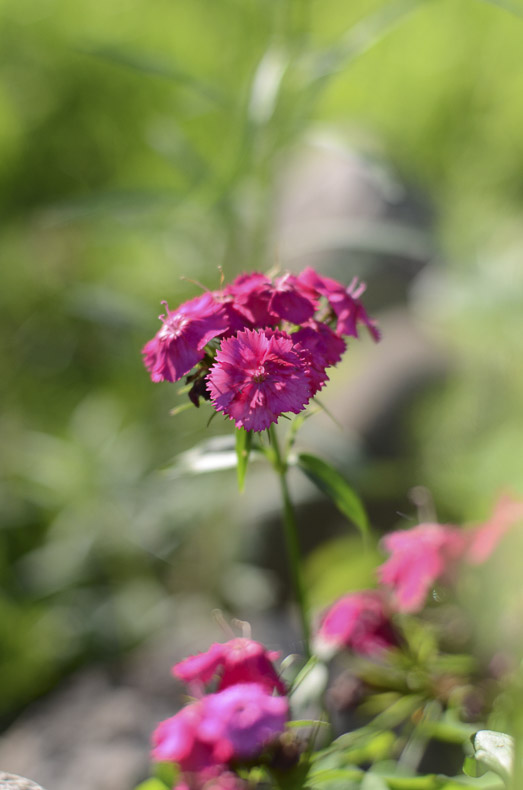


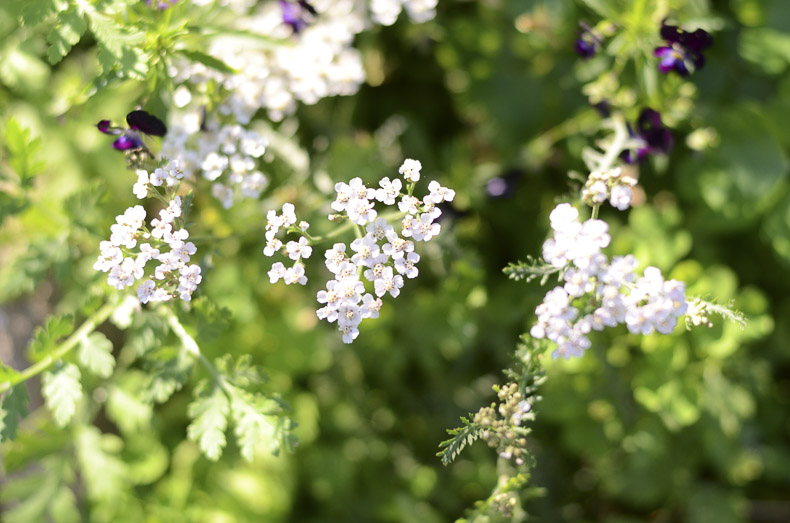

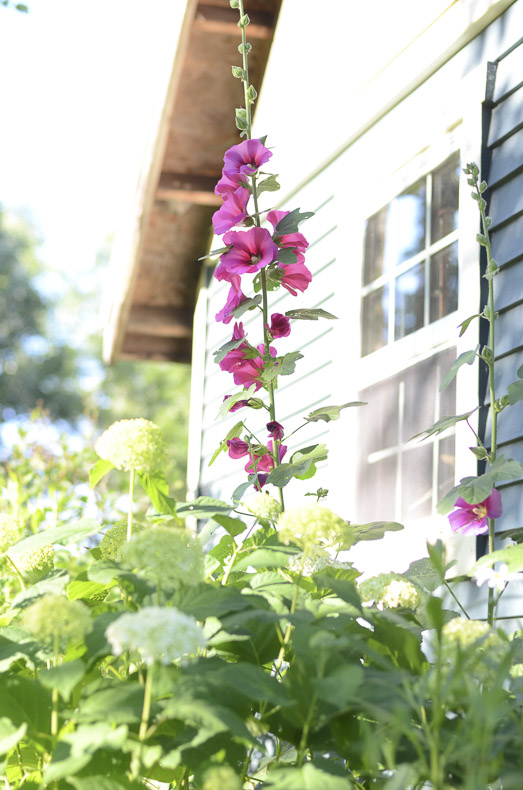

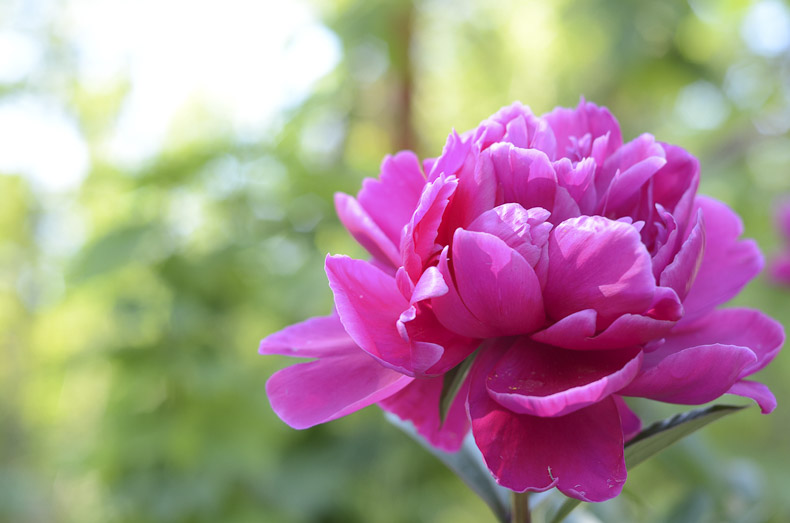
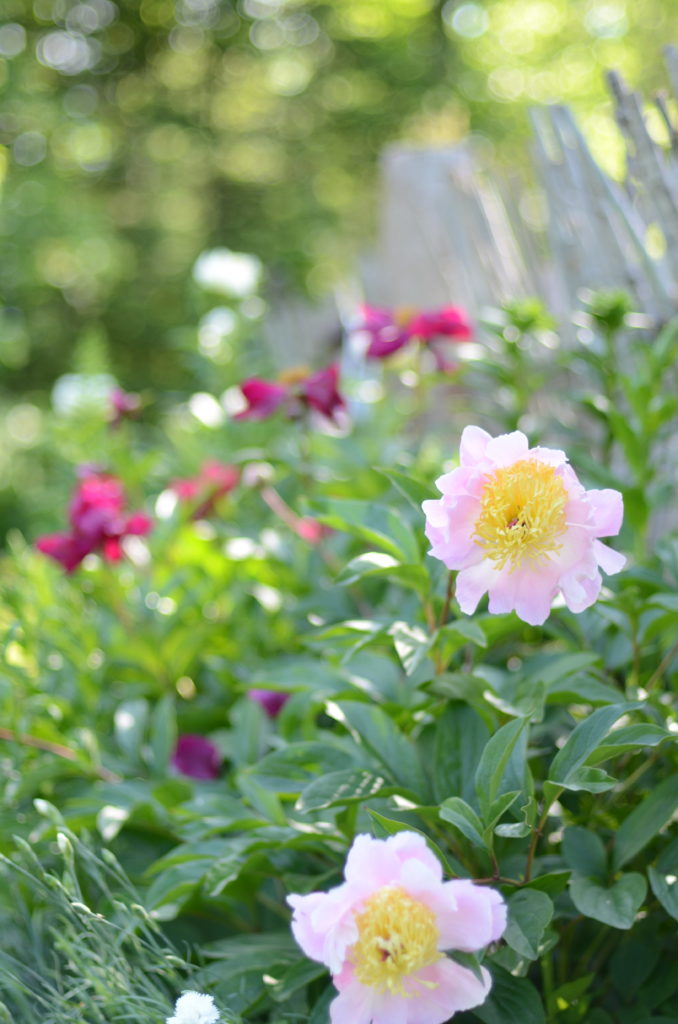
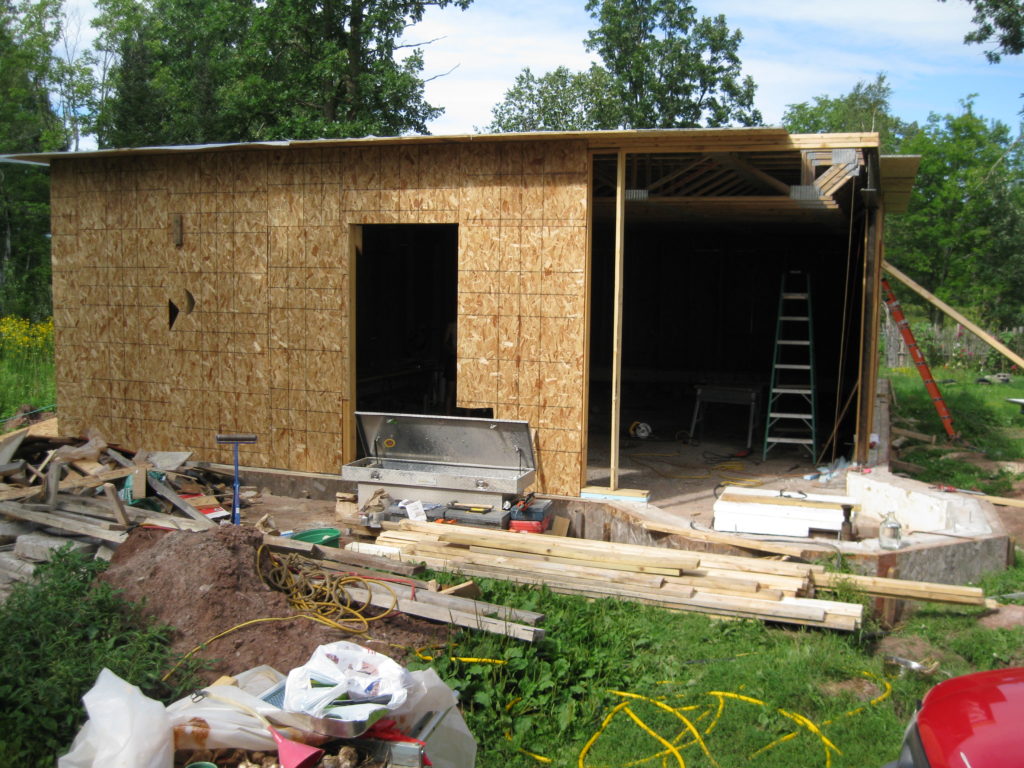
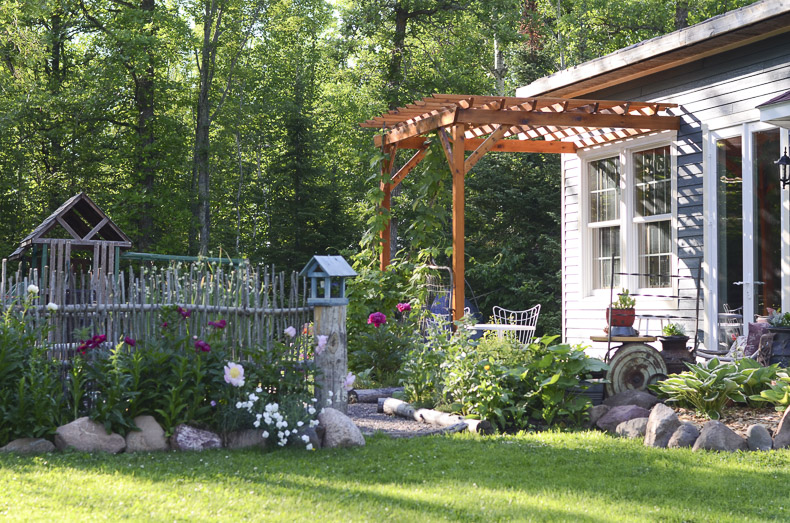
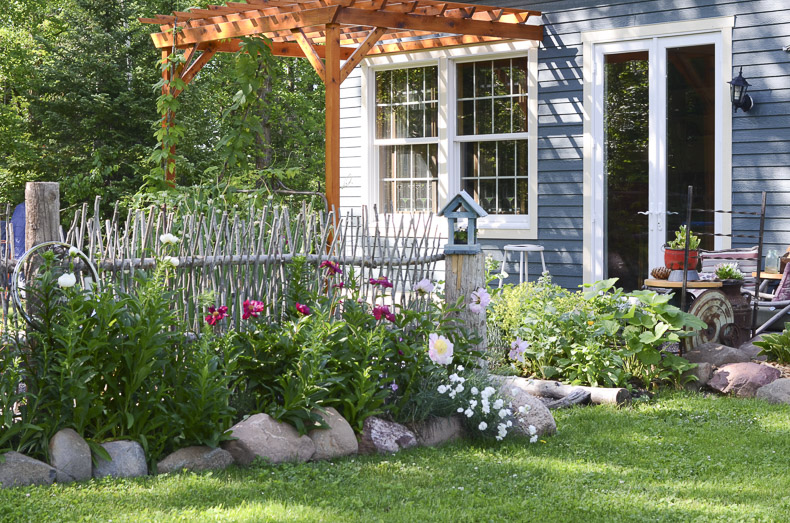
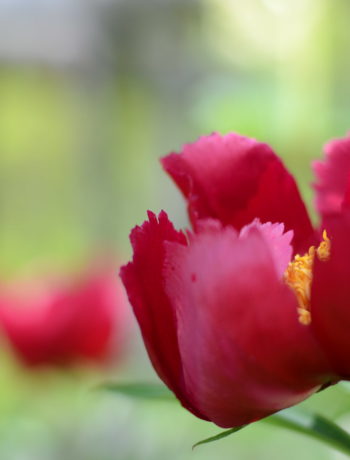
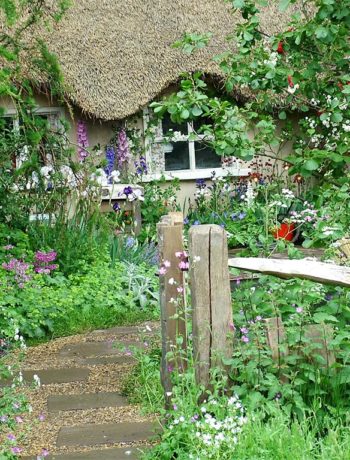
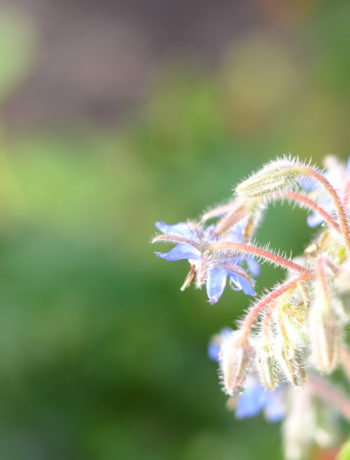
No Comments